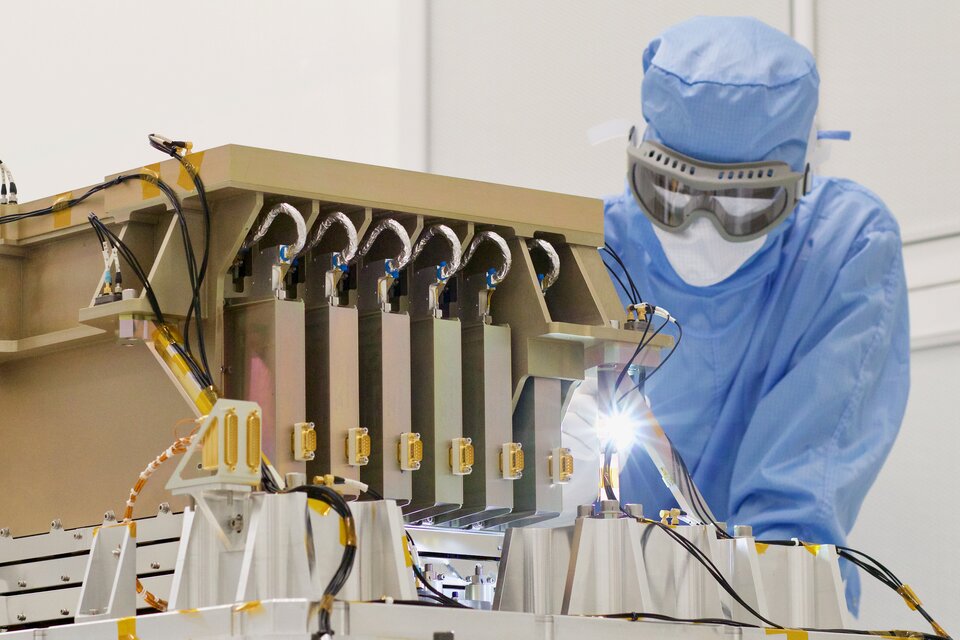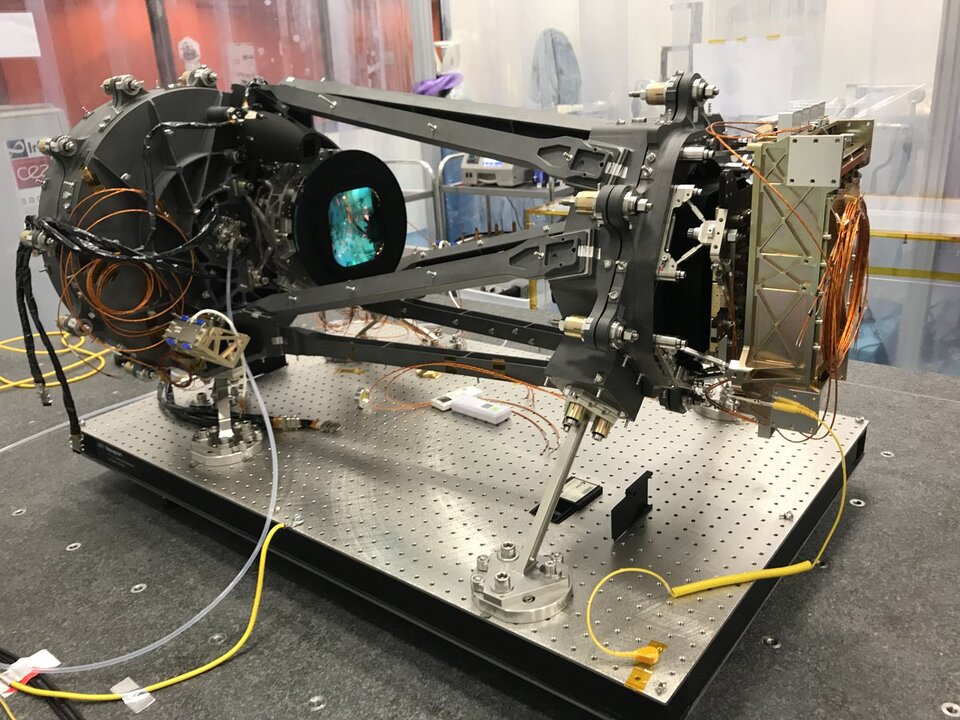Euclid’s instruments
To map the Universe and see how it evolved over time, Euclid examines light from distant galaxies using two scientific instruments on board.
Euclid’s 1.2-metre mirror telescope collects the light. A special component (named a dichroic filter) behind the telescope splits it into visible and infrared light. This is then passed to the two on-board instruments: the VISible instrument (VIS) and the Near-Infrared Spectrometer and Photometer (NISP).
The VISible instrument (VIS)

VIS takes very sharp images of galaxies over a much larger fraction of sky than would be possible from the ground. These observations will be used to measure the shapes of over a billion galaxies. Because the trajectory of light is affected by gravity, the shapes of galaxies is also, subtly, affected by the gravity field. By combining this information with accurate estimates of the distance of tens of millions of these objects, scientists will chart the 3-dimensional distribution of matter in the Universe and study how cosmic acceleration modifies its expansion history.
As the name suggests, VIS collects visible light. It is sensitive to wavelengths from green (550 nanometres) up to near-infrared (900 nm). The instrument uses a mosaic of 36 CCDs (Charge Coupled Devices, a type of camera sensor), each of which contains more than 4000 pixels by 4000 pixels. This gives the detector a total of about 600 megapixels, equivalent to almost seventy 4K resolution screens.
VIS has a very large field-of-view: it can image 0.5 square degrees on the night sky at a time, equivalent to the area of 2.5 full moons as seen from Earth. Because VIS can collect light for a long time per object in space, it will also deliver the best low-light sensitivity ever achieved over a broad range of wavelengths.
Near-Infrared Spectrometer and Photometer (NISP)

NISP is dedicated to making spectroscopic measurements of galaxies, which involves determining how much light they emit per wavelength. This is useful for measuring the galaxies’ redshift, which cosmologists can use to estimate the distance to each galaxy.
With this information, Euclid’s data will be turned into the largest, most accurate 3D survey of the Universe ever conducted. How galaxies are distributed over the Universe, and how this distribution changes over time, teaches us about dark matter (which affects gravity) and dark energy (which affects the expansion of the Universe).
NISP has the largest field of view ever flown in space for an infrared instrument. The instrument measures near-infrared light (900-2000 nm) using a grid of 16 detectors, each containing 2040 pixels by 2040 pixels.
Before reaching the detector, the incoming light is sent through either a photometry filter or a spectrometry grism. The three filters each only let light with a certain range of wavelengths pass through, known as the Y, J and H bands. This is used to image and compare the brightness of galaxies at different infrared wavelengths. The grisms, or grating prisms, disperse light so that the detector can measure the intensity per wavelength of light.















 Germany
Germany
 Austria
Austria
 Belgium
Belgium
 Denmark
Denmark
 Spain
Spain
 Estonia
Estonia
 Finland
Finland
 France
France
 Greece
Greece
 Hungary
Hungary
 Ireland
Ireland
 Italy
Italy
 Luxembourg
Luxembourg
 Norway
Norway
 The Netherlands
The Netherlands
 Poland
Poland
 Portugal
Portugal
 Czechia
Czechia
 Romania
Romania
 United Kingdom
United Kingdom
 Slovenia
Slovenia
 Sweden
Sweden
 Switzerland
Switzerland


























